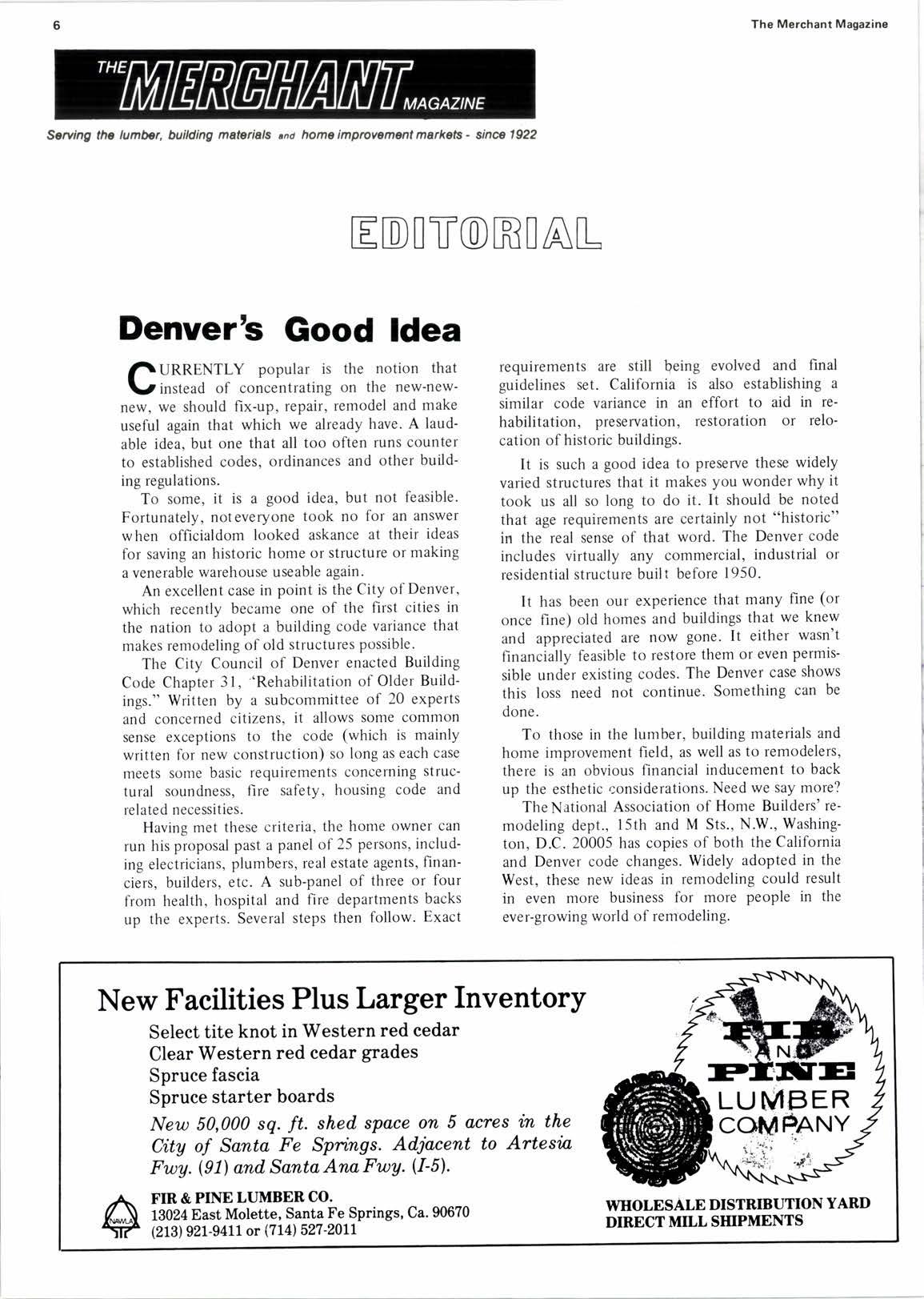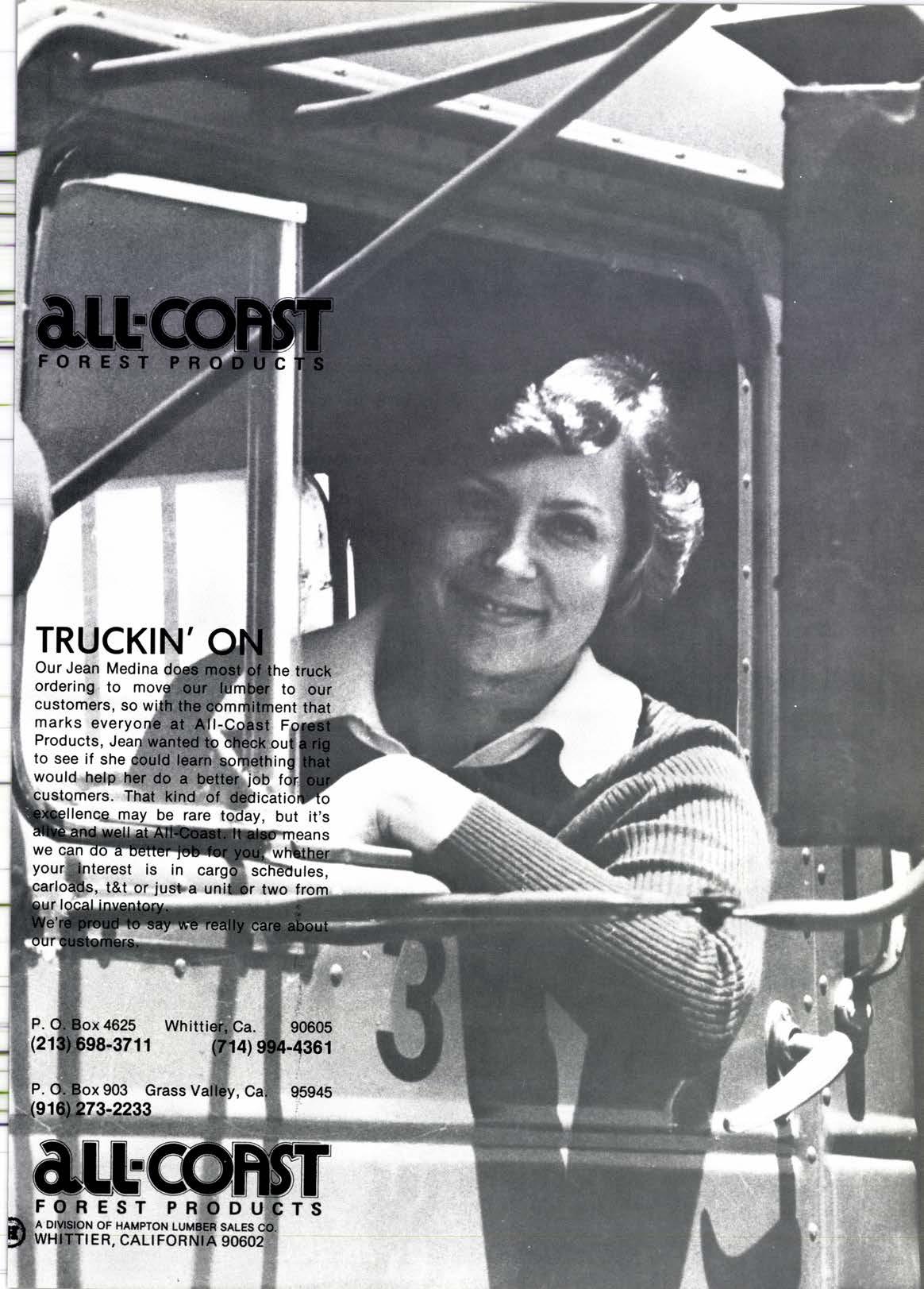
2 minute read
Denver's Good ldea
lAUnngNfly popular is the notion that \, instead of concentrating on the new-newnew, we should fix-up, repair, remodel and make useful again that which we already have. A laudable idea, but one that all too often runs counter to established codes, ordinances and other building regulations.
To some, it is a good idea, but not feasible. Fortunately, noteveryone took no for an answer when officialdom looked askance at their ideas for saving an historic home or structure or making a venerable warehouse useable again.
An excellent case in point is the City of Denver, which recently became one of the first cities in the nation to adopt a building code variance that makes remodeling of old structures possible.
The City Council of Denver enacted Building Code Chapter 31, ''Rehabilitation of Older Buildings." Written by a subcommittee of 20 experts and concerned citizens, it allows some common sense exceptions to the code (which is mainly written for new construction) so long as each case meets some basic requirements concerning structural soundness, fire safety, housing code and related necessities.
Having met these criteria, the home owner can run his proposal past a panel of 25 persons, including electricians, plumbers, real estate agents, financiers, builders, etc. A sub-panel of three or four from health, hospital and fire departments backs up the experts. Several steps then follow. Exact requirements are still Qeing evolved and final guidelines set. California is also establishing a similar code variance in an effort to aid in rehabilitation, preservation, restoration or relocation of historic buildings.
It is such a good idea to preserve these widely varied structures that it makes you wonder why it took us all so long to do it. It should be noted that age requirements are certainly not "historic" in the real sense of that word. The Denver code includes virtually any commercial, industrial or residential structure built before 1950.
It has been our experience that many fine (or once fine) old homes and buildings that we knew and appreciated are now gone. It either wasn't financially feasible to restore them or even permissible under existing codes. The Denver case shows this loss need not continue. Something can be done.
To those in the lumber, building materials and home improvement field, as well as to remodelers, there is an obvious financial inducement to back up the esthetic considerations. Need we say more?
The National Association of Home Builders' remodeling dept., l5th and M Sts., N.W., Washington, D.C. 20005 has copies of both the California and Denver code changes. Widely adopted in the West, these new ideas in remodeling could result in even more business for more people in the ever-growing world of remodeling.
New Facilities Plus Larger Inventory
Select tite knot in Western red cedar
Clear Western red cedar grades
Spruce fascia
Spruce starter boards
New 50,000 sq. ft. shed space on 5 acres in the CitU of Sonta Fe Springs. Adiacent to Artesin
FwU. @1) and SontaAnaFwU. V-51.
FIR & PINE LUMBER CO.
13024 East Molette, Santa Fe Springs, Ca.90670
(213) 921-9411 or (714) 527'201r











